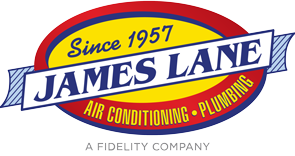While most cost-conscious homeowners keep their eye on the fundamentals of heating and air conditioning, water heating basics are often neglected. Yet, water heating is the second-largest energy consumer in the home, accounting for up to 18 percent of your total energy expenditure. One quick five-minute shower accounts for 12 gallons of hot water and the average household uses almost 65 gallons per day–most of which occurs during specific peak hours of consumption. Just as with other household appliances, water heating efficiency has increased in recent years. If your existing water heater is ten years old or more, it may fail unexpectedly and is almost certainly costing you more to operate than a new model. Because the expected service life of water heaters has also increased, you’ll be living with the energy efficiency and performance of a new unit for longer than ever. Therefore, taking a few water heating basics into consideration before you buy can pay off now and in the future.
Options have expanded beyond traditional water heating basics in recent years. The familiar storage tank heater still accounts for most new installations, but other options are gaining ground, too. Here are the most common types on the market.
Storage Tank Heaters
Storage tank models heat water and keep it in an insulated tank until it’s used. These models have a lower purchase price, a service life of up to 15 years and are universally available. The main drawback of storage tank heaters is the stand-by heat loss from the insulated tank when the water isn’t being used, necessitating frequent re-heating that wastes energy. Storage tank models with enhanced tank insulation are the best buy.
Tankless Units
Tankless water heaters, also known as on-demand water heaters, produce hot water only when it’s needed by flash heating water as it passes through a heating coil. Because only the hot water that’s actually used is heated, there’s no storage tank and therefore no stand-by heat loss. A tankless unit can be up to 34 percent more efficient than a conventional storage tank heater. Tankless heaters have a limited capacity at a specific temperature, however, and if household demand exceeds that amount, lower temperature output results. Installing multiple tankless units to serve high-demand areas of the home is often recommended to maintain performance.
Heat Pumps
Heat pump water heaters extract latent heat energy from the air and utilize it to heat water. In a warm climate or during summer in most areas, a heat pump water heater may extract enough energy to handle all the water heating needs of the house without activating the supplemental electric backup heater. In cold climates where latent heat energy is reduced, the supplemental heater assists the heat pump in maintaining water temperature. These units are most efficient in climates where temperatures average between 40 degrees and 90 degrees Fahrenheit.
Solar
Solar water heating options utilize the heat of the sun to warm water flowing through tubes in external panels. These systems are about 50 percent more efficient than water heaters powered by gas or electricity. However, a solar water heater imposes extensive upfront installation costs and will require a conventional backup water heater for cloudy days.
Conventional tank and tankless models are available in gas or electric-fueled models. Electric heaters suffer none of the efficiency losses inherent in gas-fired units that sacrifice some energy in the combustion process. However, though electric units are technically more efficient, they may actually be more expensive to operate. In most parts of the United States, the lower price of natural gas more than offsets the greater efficiency of an electric unit, making a gas-fired water heater a better buy. Contact your local utility for a comparison of gas vs. electric rates.
Water heater maintenance
Storage tank units should be flushed by releasing a quart of water from the tank drain faucet every three months. In addition, operation of the temperature/pressure relief valve should be checked twice a year by manually operating the spring-loaded handle on the valve and verifying that it opens and closes freely. Anode rods that reduce storage tank corrosion should be replaced every five years to maximize service life of the heater.
Tankless heaters benefit from an annual cleaning to reduce the accumulation of lime and calcium deposits on internal heat exchange elements. This can be performed by a plumbing professional utilizing specialized chemicals.
If you have more questions about water heating basics or need an experienced plumber in the Vernon area, contact James Lane Air Conditioning & Plumbing Company.
